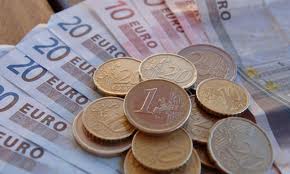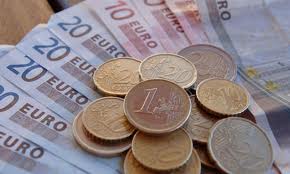Introduction to Foreign Exchange
Foreign Exchange means Foreign Currency. If we consider Foreign Exchange as a subject then it means all kinds of transactions related to foreign Currency, as well as currency instruments such as draft, MT, TT, TC, and Payment Order & Foreign Trade. In other words Foreign Exchange deals with Foreign Financial Transactions. Foreign Exchange refers to the process or mechanism by which the currency of one country is converted into the currency of another currency and, thereby, involves the international transfer of money. It is the means of method by which rights to wealth in a country’s currency are converted into rights to wealth in another currency. In banks where we talk Foreign Exchange, we refer to the general mechanism by which a bank converts currency of one country into that of another’s.
Dr. Paul Einzig defines Foreign Exchange as the system or process of converting one national currency into another and of transferring the ownership of money from one country to another.
In the words of Mr. H. E. Evitt, Foreign Exchange is that section of Economic Science which deals with the means and method by which rights to wealth on one country’s currency are converted into rights to wealth in terms of another country’s currency. In terms of Foreign Exchange Regulations Act, 1947 as adapted in Bangladesh, Foreign Exchange means Foreign Currency and include all deposits cr4edits and balances payable in Foreign currency as well as all Foreign currency instruments, such as, Drafts, Travelers Cheques, Bill of Exchange, Hundi, and Promissory Notes payable in any foreign country.
Types of Foreign Exchange
There are three kinds of Foreign Exchange Transactions
- Import
- Export and
- Remittance (Inward and Outward)
Scope of Foreign Exchange
No country is self sufficient in this world. Every one is more or less dependent on another, for goods and services. Say, Bangladesh has cheap manpower whereas Saudi Arabia has cheap Petroleum. So Bangladesh is dependent on Saudi Arabia for petroleum and Saudi Arabia is dependent on Bangladesh for cheap manpower. In this backdrop Bangladesh earns huge remittance of Green Back (US Dollar, EURO, Pound Sterling, Yen, Ringit, Rial etc. to meet up its import payments People of one country is going to another country for education, medical services etc. one country exports agricultural commodities another country exports industrial products. All these transactions needs foreign currency and are closely related to foreign exchange.
Definition of Import
Import may be defined as bringing of visible items to the country from abroad through letter of credit or LCA Form paying foreign Currency to the exporting country.
Import business involves transactions in foreign exchange. By foreign exchange we generally mean foreign currency like US Dollar notes, Great Britain Pound etc. Bank notes or what we commonly call foreign currency notes however, do not play any significant role in settlement of international transactions. The term foreign exchange is used in broader sense as a process of conversion of one currency into another. Foreign Exchange and Foreign Trade is a part of economic science; it deals with the means and method by which rights to wealth in one country’s currency are converted into those of another country.
Foreign Exchange Regulation Act-1947 regulates Foreign Exchange dealings in our country. Under this Act, Bangladesh Bank has published a Book in two volumes as on 30th September 1996 named as “Guidelines for Foreign Exchange Transactions” which governs the import procedures to be followed by the AD branches for import business. Import is also regulated by the Import policy order of the Ministry of commerce and other notices of the CCI&E and the NBR. As such, all of our AD Branches must follow these Guidelines in dealing with import business.
As our Bank is an Islami Bank, we have to abide by the principles of Islamic Shariah; our branches have to follow the internal circulars of the bank in respect of import business and this guidebook. All of our AD Branches are instructed to follow this guidebook at the time of foreign exchange dealings. Any subsequent amendment, modification, addition/ foreign exchange circulars issued by Bangladesh Bank and our Head Office also to be followed by the AD Branches.
Classifications of importers
Goods are being imported for personal use, commercial purpose or industrial use. So there are three kinds of importers such as :
- Personal Import (User). They need no registration from CCI&E for import up to a certain amount as per IPO in force.
- Commercial Import: – Those who import the goods to sell-out the same to the market directly without any other processing is called commercial importer.
- Industrial Consumer: – Those who Import the goods for Industrial Consumption are called Industrial Importer.
Import Trade Control Act and Authorities
a) Foreign Exchange Regulation Act-1947
b) Import Export (Control) Act, 1950.
c) Importer, Exporter, Indentor (Registration) Order-1981
d) Chief Controller of Imports & Export (CCI&E)
e) Bangladesh Bank.
The Main guidelines of Foreign Exchange Operation:
a) Guidelines for Foreign Exchange Transactions (Published by Bangladesh Bank).
b) Import Policy Order -IPO (Published by Ministry of Commerce)
c) Uniform Customs & Practice for Documentary Credits (UCPDC), ICC Publication No. 600.
d) Uniform Rules for Collection (URC), ICC Publication No. 522
e) Uniform Rules for Bank-to-Bank Reimbursement (URR), ICC Publication No. 525.
f) Incoterms-2000.
g) International Standby Practice- (ISP-98).
h) International Standard Banking Practice- (ISBP-2008),ICC Publication No.645
i) EUCP- Supplement to UCP-600 for Electronic Presentation.
j) Foreign Exchange (FE) Circulars (issued by Bangladesh Bank).
k) Public Notice issued by CCI & E.
Import Trade Control:
Import of goods into Bangladesh is regulated by the Ministry of Commerce in terms of the Import and Export (Control) Act, 1950; with Import Policy Orders issued biannually, and Public Notices issued from time to time by the office of the Chief Controller of Imports and Exports (CCI&E). The instructions contained in this chapter apply to sales of foreign exchange or transfers to non-resident taka accounts against import of goods into Bangladesh.
Definition of LC
The Uniform Customs and Practice for Documentary Credits, 2007 Revision, ICC Publication no. 600 (“UCP”) are rules that apply to any documentary credit (“credit”) (including, to the extent to which they may be applicable, any standby letter of credit) when the text of the credit expressly indicates that it is subject to these rules. They are binding on all parties thereto unless expressly modified or excluded by the credit.
Credit means any arrangement, however named or described, that is irrevocable and thereby constitutes a definite undertaking of the issuing bank to honor a complying presentation.
Parties to an L/C.:
- The Issuing Bank/Importer’s Bank/Applicant’s Bank
- Supplier/Beneficiary/Exporter.
- The Confirming Bank (if any)
- The Advising Bank
- Negotiating Bank
- Reimbursing Bank
- Transferring g bank
- Notify party
- Active credit policy
- Proper mobilization of credit
Types of LC
Though ICC in its UCPDC 600 mentioned only one type of LC that is irrevocable, but in general in world business practice there are several types of LC still exists which are
- Irrevocable LC
- Add confirmed LC
- Clean clause LC
- Revolving LC
- Transferable LC
- Restricted LC
- Red clause LC
- Green clause LC
- Clean Letter of Credit
- Straight Documentary Credit
- Irrevocable Negotiable Documentary Credit
- Stand by Credit
- Back to Back LC
- Cash LC
- Barter LC
- LC under commodity Aid Loan, Credit or Grant.
Application for Import by a client:
A valid importer will submit the following paper/documents to his Bank to open L/C:
- L/C Application form duly signed by the importer with adhesive Stamp (the stamp value may increase or decrease as per policy of the Govt.).
- Indent/pro forma Invoice.
- Insurance Cover Note
- LCAF duly filled in & Signed by the importer
- Membership Certificate from Chamber of Commerce/Trade Association.
- Tax payment declaration
- Charge documents such as Musharaka/Murabaha/Bai-Muazzal Agreement
- IMP & TM form (Travel & Miscellaneous Form).
- IRC, Pass Book, Trade license, Membership Certificate from the Chamber of Commerce or their recognized /affiliated body in case of new customers.
- VAT registration Certificate
- Export L/C in case of Back to Back L/C
Sanctioning L/C to a client:
Upon receipt of the application, dealing officer will initiate office note covering the following:
- Whether the client has valid limit.
- Whether the proposal is within the limit or within the power of Branch incumbent.
- The item to be imported is permissible.
- Whether Credit Report of the supplier obtained as per instructions of the Guidelines.
- Market Report of the goods.
- Competitive price of the goods
- The indent bears the Indent Registration Certificate (IRC) number & Bangladesh Bank permission of the Indentor.
- The indent bears the signature of Agent & Importer.
On being satisfied, Branch will issue a letter of credit on behalf of the importer and send the same to the beneficiary through any of our Correspondent banks.
Definition of Export
By export we generally mean selling of visible and invisible goods and services outside the country against letter of credit, firm contract or Advance payment. Besides, local supplies against Letter of Credit /contract through banking channel are also deemed as export. However the local exports does not need to be reported to Bangladesh Bank in the schedules.
Export Business occupies a very important position in the Balance of Trade and Balance of Payment of the country. Export occupies an important position in the foreign exchange business portfolio of the bank. In handling export business, certain Acts, guidelines, & regulations have to be followed such as the Export Trade Control Regulation Act, Guidelines for Foreign Exchange Transactions published by Bangladesh Bank and Export Policy issued by Ministry of Commerce from time to time. At the same time, as a Shariah based Bank, our export business should comply with the provisions/ principles of Islamic Shariah. If any of the provisions of this guidebook contradicts in any way the government rule or accepted international banking practice in that case the government rule or the international banking practice (ISBP) will reign on this book. Any subsequent not covered in this book must also be followed. If any area of foreign exchange business is not covered in this book in that case the prevailing rules of Bangladesh Bank and international norms have to be followed.
Procedure of opening of Back to Back Letter of Credit against Export LC
Documents to be obtained from the client-
The new client who desires to avail BB L/C facility has to submit following papers/documents to the bank for consideration:
- Memorandum of Association in case of Limited Co.
- Articles of Association
- Certificate of incorporation.
- Declaration regarding liability with other Bank/NOC from other Bank.
- Detailed credit report under F-167B.
- Tax Identification Number (TIN).
- Declaration of Assets & liabilities of Directors.
- Bonded warehouse license.
- Declaration of collateral offered.
- List of machinery with value including commercial invoice.
- 100% Share certificate of the Company.
- Valid fire license.
- Registration from EPB.
- Membership certificate from BGMEA/BTMA.
- Valid Trade license
- Resolution of the Company Seeking financial assistance from the Bank and branch and also the person/persons who will operate Bank A/C.
- Two Passport size photographs of each Director.
- Latest audited income statement & Balance sheet of the Company.
- Statement of last three years performance of the company
- VAT certificate.

















